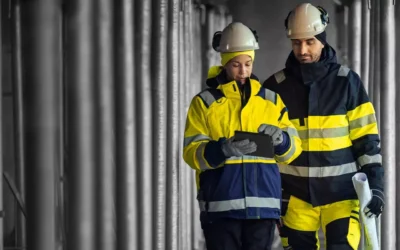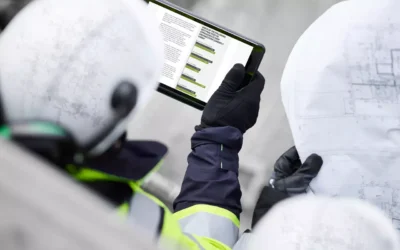This time of the year in the U.S., political slogans are often everywhere, with campaigns and candidates pledging to put their constituents first. But until there are actual results via legislation or meaningful change, we really have no idea what will materialize. Concerning construction, items like infrastructure bills and funds earmarked for local capital projects certainly impact our industry. But what about project pledges to our customers and fulfilling their expectations?
Just like political promises — kept or unkept — the way large capital projects are executed tends to run in parallel. An owner, our customer, comes to us with a need. We shower them with our own “slogans:” Efficiency, Minimal Waste, or Sustainably Green. The biggest promise of them all, though, may be Customer First!
What I am getting at is, once they sign the paperwork and the project is underway, how do our customers know they are first with us? They may see some earth moving being done, support structures erected, plus heavy equipment and people on site, but how do they know we are fulfilling our campaign (sales) promises to them between the photo opp with the gold shovels and the final one with the giant scissors?
Communication for All
If every project was a straight line from point A at kickoff to point B at turnover, providing proof would be easy. But the fact is that major capital projects can last years and cost billions of dollars, with many twists and turns along the way.
Stakeholders on both the contractor and owner sides of the deal may move and some new people may join. Legislation or code impacting construction could change as well. Costs of raw materials will likely fluctuate. Any number of changes outside the control of the parties involved in the deal could impact how it needs to be executed.
Therefore, truly putting the customer first in this environment comes down to strong communication.
And keeping our customers first, if done via traditional methods, is a significant effort in terms of time and expense for a contractor without the right communications approach. Thankfully, today’s construction communication technology offers a better way.
For example, are we able to hold quarterly update meetings with current data or are we still relying on traditional yet outdated tools, paper processes and manual consolidation for reporting? If putting the customer first truly is a goal of the project, we need to take a cue from the field. Just as those with boots on the ground adopt new technologies to be more efficient and effective, we need to adopt new technologies and processes to make our communication more efficient and effective.
Real-Time Transparency
How do we reduce the cost of communicating with our customers and get them better, more transparent data, all while protecting our internal information and still focusing on our main goal of getting the work done? Again, the straight and true answer is the right technology.
Familiar yet waning items like paper timesheets, whiteboards with Post-Its plastered all over, strings of emails and screenshots for schedulers, endless phone calls to a supervisor in the office to report a potential issue, and other manual processes lead to delayed and error-prone data. Then we take that old, inaccurate data and have somebody manually create reports, graphs, and statuses. Finally, we hope that it is good enough for the owner.
Therefore, implementing new technologies is the key to any meaningful communication transformation. To be successful, we need to start from the front lines and work our way back to the owner — a sort of “where it starts to where it’s going” approach. From the field, digital time and progress reports can automatically be submitted and compiled on the backend.
By doing so, we reduce the opportunity for error in copying data from a paper card to the reporting system, and also avoid delays between when the info is written on the paper and when it shows up on our reports. The cost of extra clerks to do such manual tasks is also greatly reduced in the process. Not only is digitalization of our processes more cost effective in the long run, but it is more accurate, timelier, and more reliable; all of which promotes project confidence and puts the customer first.
Right Data, Right People, Right Time
An accurate picture of progress in the field into a digital budget and schedule means a truly accurate representation of the project’s financial and schedule health, in real time. As a project manager, this gives me the ability to not only support those quarterly meetings with confidence, but to create dashboards an owner can use to check in on their investment at any time.
Obviously, the owner wouldn’t have access to every nitty gritty detail. But a near-real time version of their quarterly KPIs would mean no surprises at that touch base. Issues, wins, opportunities can be surfaced as they come up. And all of this information is at the fingertips of contractors and owners with less effort spent on compiling data and preparing reports.
Tom Baskind, Assistant Chief Estimator at Graycor, puts it into perspective relating what happened when his team started implementing new technologies in their backend processes. “Reporting has never been easier, because we run the canned reports, and the data is ready in seconds,” he explains.
“Projects can send reports to management shortly after they finish forecasting, and we can provide data to those that need it in a quick manner with very little effort.”
Keep in mind, Graycor’s experience is just one example of how the right new technologies can push us toward a truly customer-centric engagement. Similar flows for change management, schedule revision, QA/QC, and nearly every aspect of our projects can be improved with the correct, well-placed technology.
In the end, it comes down to a few key questions. Is it free to implement? No, but neither was that GPS-guided grading system you probably bought. You might instead ask, will it make our businesses more efficient, accurate, and in turn profitable? Yes. Will technology help us keep our Customer First promise? Absolutely. And those are answers you can bank on now, and for your business well into the future.
Ready to take a deeper dive? Schedule a one-on-one consultation to find out how InEight can help you succeed in your construction digitalization journey.
Sign up for our monthly blog newsletter today and stay up to date on the latest industry news.




